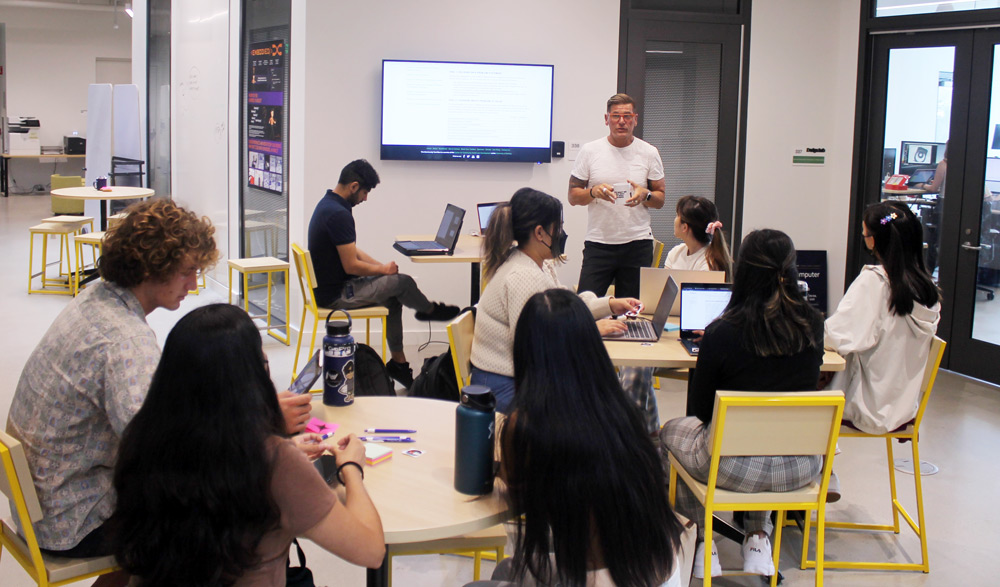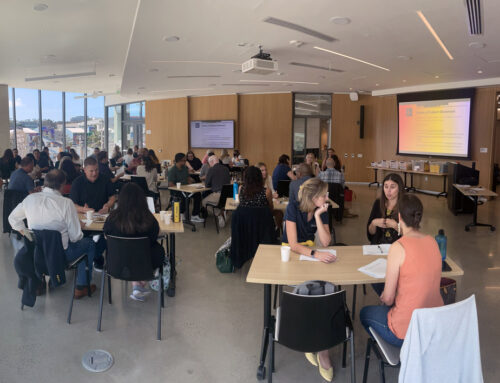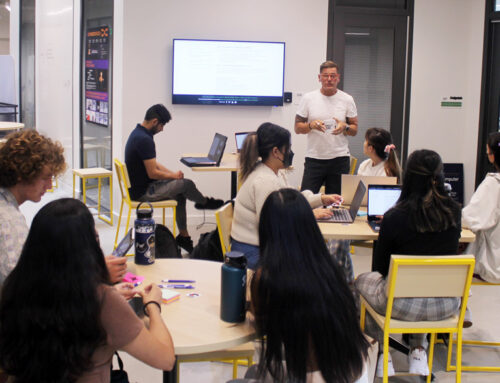Test: Collecting Feedback on Ideas
The Idea Guy • January 19, 2019
About Test
Throughout the process, we have gained empathy for our users, defined their needs, brainstormed possible solutions, and created tangible prototypes that will help to solve their problems, Now, it is vital that we test the prototypes we have created to ensure that they are in fact feasible. This is best practiced by involving the end user in the testing.
By testing the user-experience (UX) and user satisfaction when interacting with the solution, we are able to gain further insight into what is successful and what can be further improved. Often, the testing stage is where we discover that our ideas are not going to work. Therefore, we may need to revisit where we went wrong during the previous design stages and possibly even start again. It is crucial that we test our solutions on many levels so that we are confident that our idea is ready to move onto the final stage.
Definition: Ensuring that our idea is viable, feasible and desirable before settling on a final concept.
Definition: Ensuring that our idea is viable, feasible and desirable before settling on a final concept.
Meaning of Color
Green is the color best known for representing life’s cycle and renewal. Therefore, this fits perfectly with the testing stage as we often have to start from the beginning of the design process in order to arrive at the best possible solution. This may even take several cycles of repeating the entire process until we get it right. Therefore, the color green encourages this rebirthing and gives us hope that we may arrive at the best possible solution.
- “Green assists in decision making by helping us to see all sides clearly” Learn more here
- The color green is in association with renewal, growth, hope, need for growth, and rebirth.” Learn more here.
- “Green stands for balance, nature, spring, and rebirth. It’s the symbol of prosperity, freshness, and progress.” Learn more here.
Video: About Testing
Theory
What is Testing?
The Test mode is when you solicit feedback, about the prototypes you have created, from your users and have another opportunity to gain empathy for the people you are designing for. Testing is another opportunity to understand your user, but unlike your initial empathy mode, you have now likely done more framing of the problem and created prototypes to test. Both these things tend to focus the interaction with users, but don’t reduce your “testing” work to asking whether or not people like your solution. Instead, continue to ask “Why?”, and focus on what you can learn about the person and the problem as well as your potential solutions. Ideally you can test within a real context of the user’s life. For a physical object, ask people to take it with them and use it within their normal routines. For an experience, try to create a scenario in a location that would capture the real situation. If testing a prototype in a situation is not possible, frame a more realistic situation by having users take on a role or task when approaching your prototype. A rule of thumb: always prototype as if you know you’re right, but test as if you know you’re wrong—testing is the chance to refine your solutions and make them better.
Why Test?
To refine prototypes and solutions. Testing informs the next iterations of prototypes. Sometimes this means going back to the drawing board. To learn more about your user. Testing is another opportunity to build empathy through observation and engagement—it often yields unexpected insights. To refine your POV. Sometimes testing reveals that not only did you not get the solution right, but also that you failed to frame the problem correctly.
An Example of Testing
Tools
Experiential | Experiential testing establishes what content and functionality a new product should include to meet the needs of its users. Users test a range of different services where they are given realistic scenarios to complete. The purpose of experiential testing is to see how the users interact with the prototype in a real-life scenario. This can often be completed by role-playing. The key to experiential testing is to make the situation as close to reality as possible.
User Testing | Usability testing is a way to see how easy to use something is by testing it with real users.Users are asked to complete tasks, typically while they are being observed by a researcher, to see where they encounter problems and experience confusion. If more people encounter similar problems, recommendations will be made to overcome these usability issues.
A/B Testing | A/B testing (also known as split testing or bucket testing) is a method of comparing two versions of a webpage or app against each other to determine which one performs better. AB testing is essentially an experiment where two or more variants of a page are shown to users at random, and statistical analysis is used to determine which variation performs better for a given conversion goal. Running an AB test that directly compares a variation against a current experience lets you ask focused questions about changes to your website or app, and then collect data about the impact of that change. Testing takes the guesswork out of website optimization and enables data-informed decisions that shift business conversations from “we think” to “we know.” By measuring the impact that changes have on your metrics, you can ensure that every change produces positive results.
In an A/B test, you take a webpage or app screen and modify it to create a second version of the same page. This change can be as simple as a single headline or button, or be a complete redesign of the page. Then, half of your traffic is shown the original version of the page (known as the control) and half are shown the modified version of the page (the variation). As visitors are served either the control or variation, their engagement with each experience is measured and collected in an analytics dashboard and analyzed through a statistical engine. You can then determine whether changing the experience had a positive, negative, or no effect on visitor behavior.
A/B testing allows individuals, teams, and companies to make careful changes to their user experiences while collecting data on the results. This allows them to construct hypotheses, and to learn better why certain elements of their experiences impact user behavior. In another way, they can be proven wrong—their opinion about the best experience for a given goal can be proven wrong through an A/B test.More than just answering a one-off question or settling a disagreement, AB testing can be used consistently to continually improve a given experience, improving a single goal like conversion rate over time.For instance, a B2B technology company may want to improve their sales lead quality and volume from campaign landing pages. In order to achieve that goal, the team would try A/B testing changes to the headline, visual imagery, form fields, call to action, and overall layout of the page.
Testing one change at a time helps them pinpoint which changes had an effect on their visitors’ behavior, and which ones did not. Over time, they can combine the effect of multiple winning changes from experiments to demonstrate the measurable improvement of the new experience over the old one.








